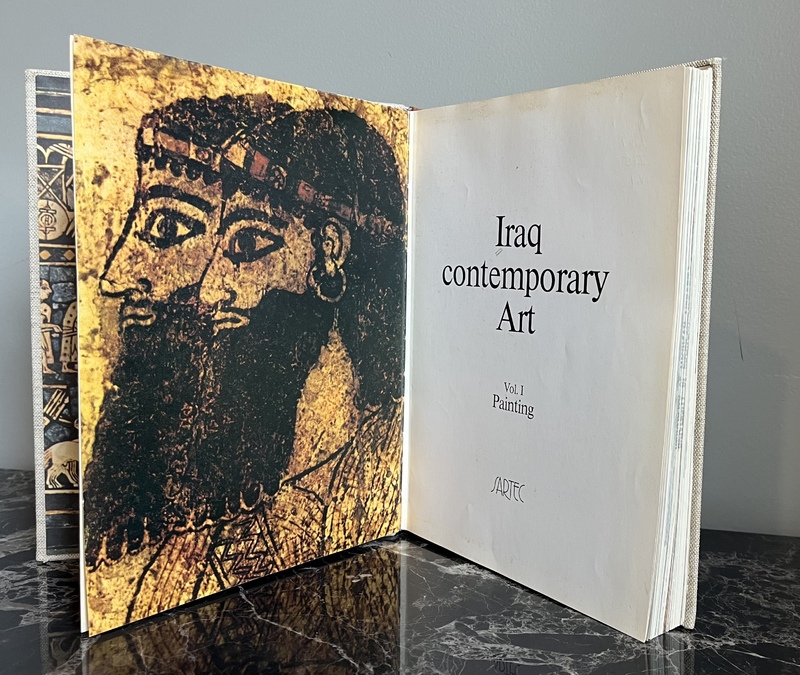Art as a Public Project
Following the socialist revolution of 1968 and the nationalization of oil reserves, Iraq recognized its artists as a resource worthy of public funding. The book Iraq Contemporary Art: Vol. 1 Painting was among many publicly funded projects to record and admire the internationally-renowned modern art movement. Published in 1977 by the Ministry of Information of the Iraqi Public, this compilation traced Iraq’s art history from pre-Islamic Mesopotamia to the First Biennale of Plastic Arts in 1974. Translations into English and Spanish, alongside the outsourcing of printing to Europe, speak to a dream of entering the global art market. Unfortunately, despite intent to do so, no further volumes or editions were published due to the ensuing decades of war, occupation, and economic deprivation.
The title page of the English edition of this book features a facing frontispiece with an image of two male silhouettes from a Sumerian painting, which represents the first era of art history covered by the volume. Flipping through the book, artifacts from mid century artists’ organizations weave the artist biographies to Iraq’s social institutions. From these artifacts, we see the social productions of these artists form into guilds as they innovated their own styles and identities in the art world.
Exhibitions were held to highlight these guilds. Here, an orange square with artistic lettering invites people to the 18th art exhibition held by The Primitives Group ("Société Primitive," eventually known as "The Pioneers"), an artists’ guild, in 1975. These invitations were posted in public areas, inviting the general public to attend and are a testament to the accessibility of the Iraqi Art scene. It was truly for everybody to view.

Across Ethnic Lines


